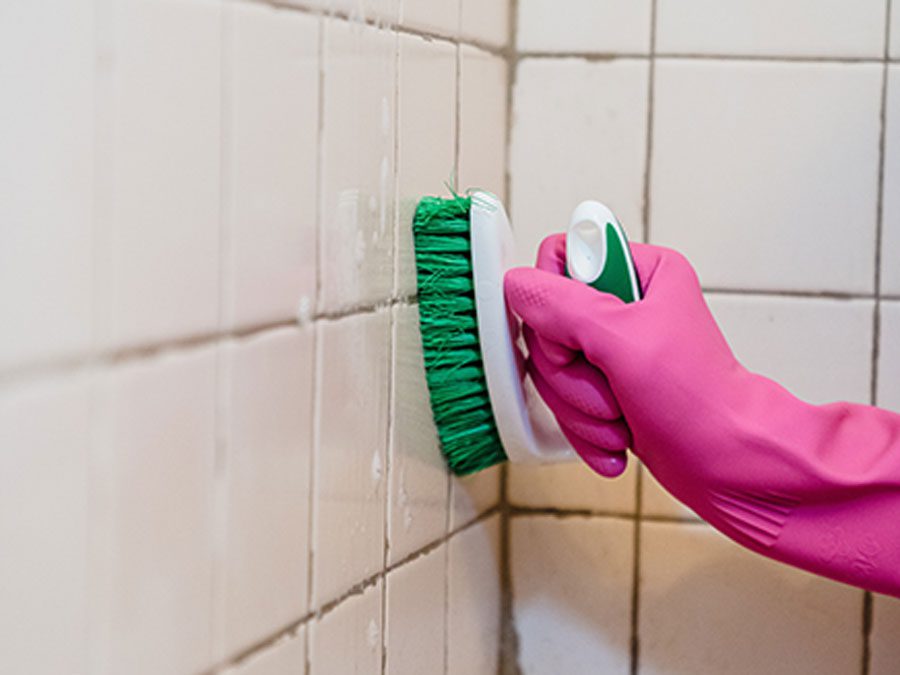Water travels on a long journey from a water treatment facility to your household pipes. Along the way, water can pick up numerous contaminants, including sediment, silt, and microorganisms.
Additionally, pipe corrosion may add copper, lead, and other metals to your water. If left untreated, these water impurities may lead to illness, sink and bathtub stains, and mineral deposits that clog your pipes.
Do you notice that your water seems “off”? If your water tastes metallic, smells like rotten eggs, or leaves spots and stains, you may have a water quality problem. Learn how to diagnose your water based on the below characteristics:
Does your water leave deposits?
Soap scum or bathtub rings:
You may have hard water. This means that your water has excessive calcium and magnesium in its supply. Water from 1 to 3.5 grains per gallon is considered hard, and 7 to 10.5 grains per gallon is considered very hard. This can lead to scale deposits, soap residue, and dry skin. A Water Softener or Scale Control System is recommended for these contaminants.
What color is your water?
Blue or green
You may have copper in your water supply. This can lead to gastrointestinal illnesses. A Whole House Filter is recommended for this contaminant.
Brown or black
You may have manganese in your water supply. This can lead to a bitter, metallic taste. A Whole House Filter is recommended for this contaminant.
Red or orange
You may have iron in your water supply. This can lead to stains, a metallic taste, or a rusty color. An Iron & H2S Filter is recommended for this contaminant.
What does your water smell like?
A swimming pool
You may have chlorine in your water supply. This can dry out hair and skin. A Whole House Filter or Point-of-Use System are recommended for this contaminant.
Rotten eggs
You may have hydrogen sulfide in your water supply. This can lead to a rotten egg or chemical smell. A Whole House Filter or Iron & H2S Filter is recommended for this contaminant.
Sediment
You may have dissolved solids in your water supply. This can lead to gastrointestinal illness and foul odors. A Whole House Filter or Point-of-Use System is recommended for this contaminant.
Fish
You may have barium or cadmium in your water supply. This can lead to circulatory system and kidney system effects. A Whole House Filter is recommended for these contaminants.
What does your water taste like?
Salt
You may have chloride or sulfate in your water supply. This can lead to diarrhea and a salty taste. A Whole House Filter or Point-of-Use System is recommended for these contaminants.
Metal
You may have iron or zinc in your water supply. This can lead to a metallic taste. A Whole House Filter or Point-of-Use System is recommended for these contaminants.
Have Your Water Tested
Whereas foul water taste, odor, and appearance can hint at a water contamination problem, invisible contaminants can be difficult to detect. The best way to figure out whether your water is contaminated is to have your water tested.
If your water comes from a municipal public water supplier, you should receive an annual drinking water report from the EPA every summer. You can see your drinking water quality report online or contact your water supplier to get a copy on the EPA website.
If you are a private well owner or if you get your water from a public water source, but wish to test for contaminants that aren’t covered in the EPA, you can send a sample of your water to a state-certified laboratory. Visit the EPA laboratory certification page for a list of state-certified drinking water laboratories.
Ready to Locate a Charger Water Dealer?
Call our toll-free number or submit a request on our “Get in Touch” form and let us know that you would like to locate a Charger Water Dealer and we will provide you with a list of dealers in your area. Our representatives will be happy to answer any additional questions you may have.

